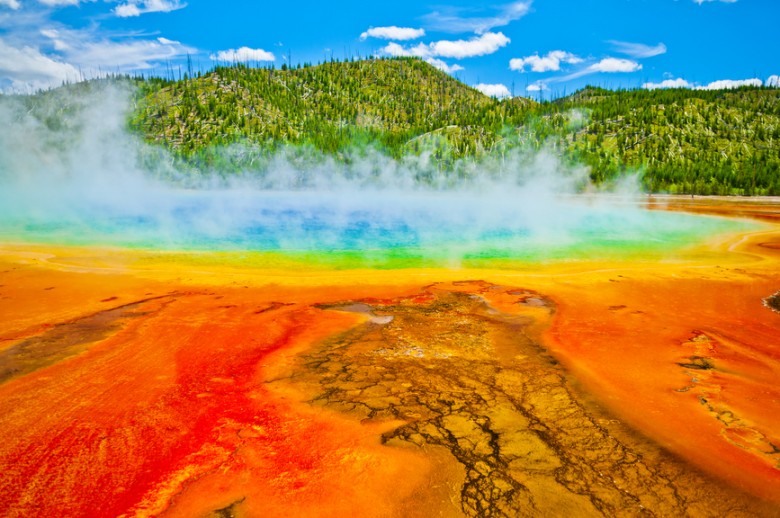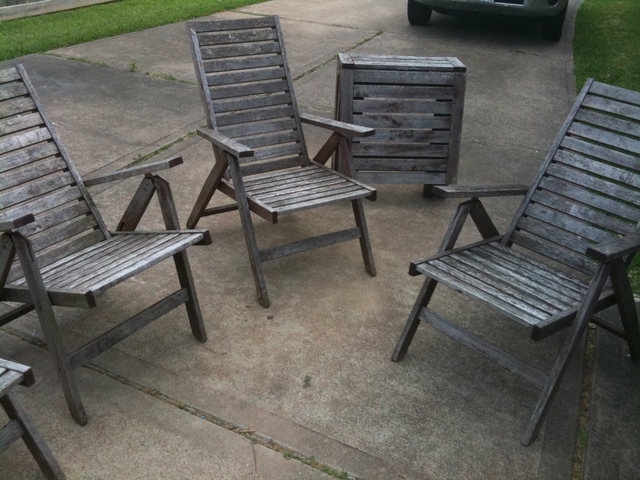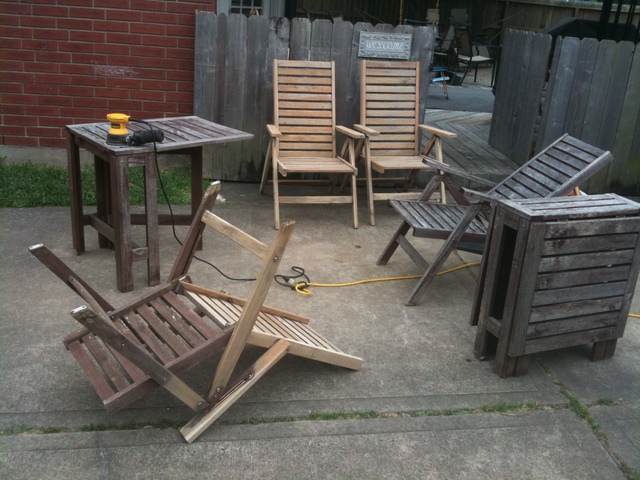Rising from the Ashes
I had always imagined one’s honeymoon would involve sand, sun, and saltwater (probably because the bulk of my family vacations were spent on the beach). So while planning our spring 2004 wedding, when Peter suggested we honeymoon at Yellowstone National Park, I was a bit taken aback. “We both love hiking and nature, and besides, it’s on my list.”
It’s on his list.
Though not the most convincing argument, I acquiesced, especially since he promised to set us up with quality lodging (no camping or “roughing it”).
Without a doubt, Yellowstone is spectacular. It should be on everyone’s list.
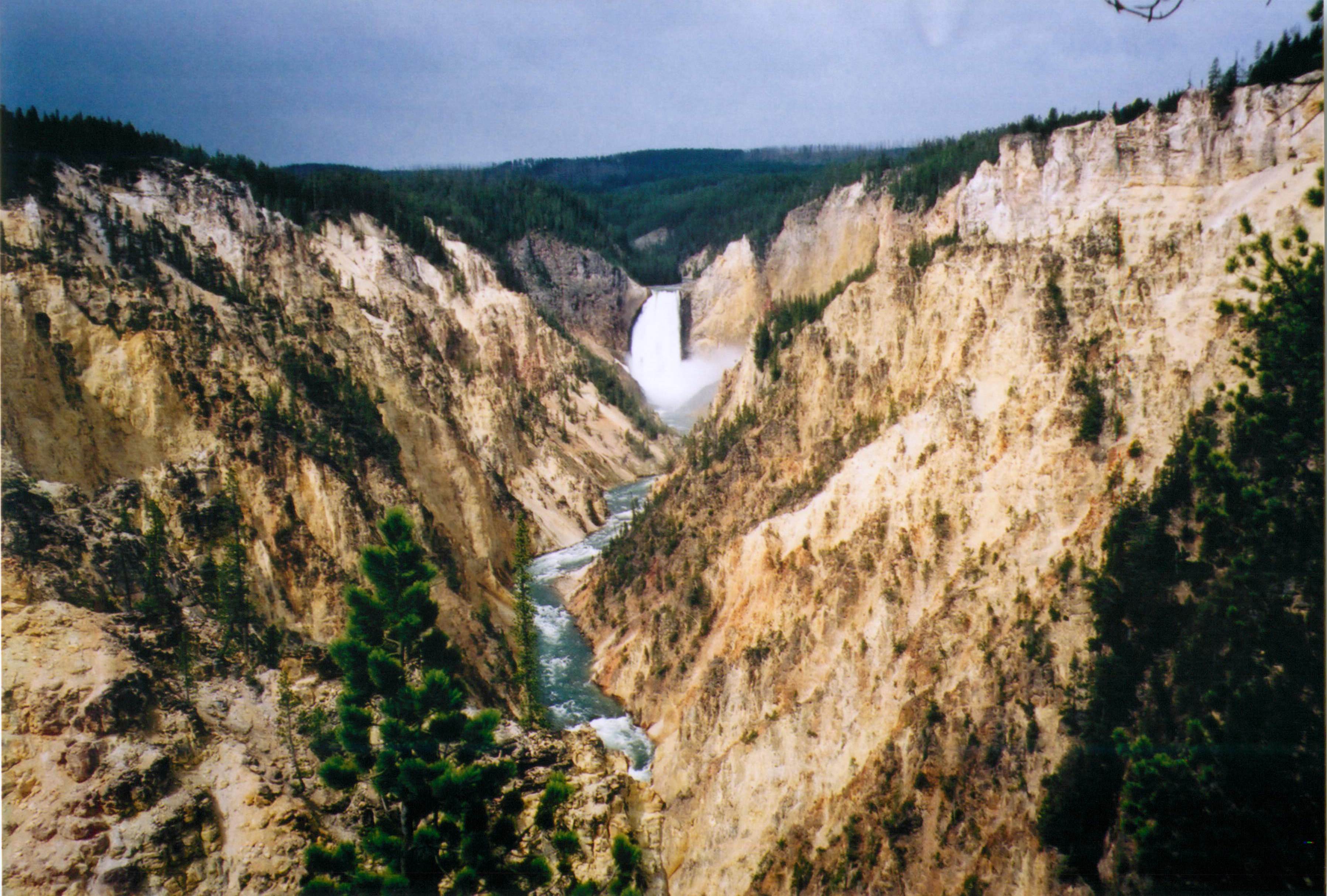 The geysers…
The geysers…
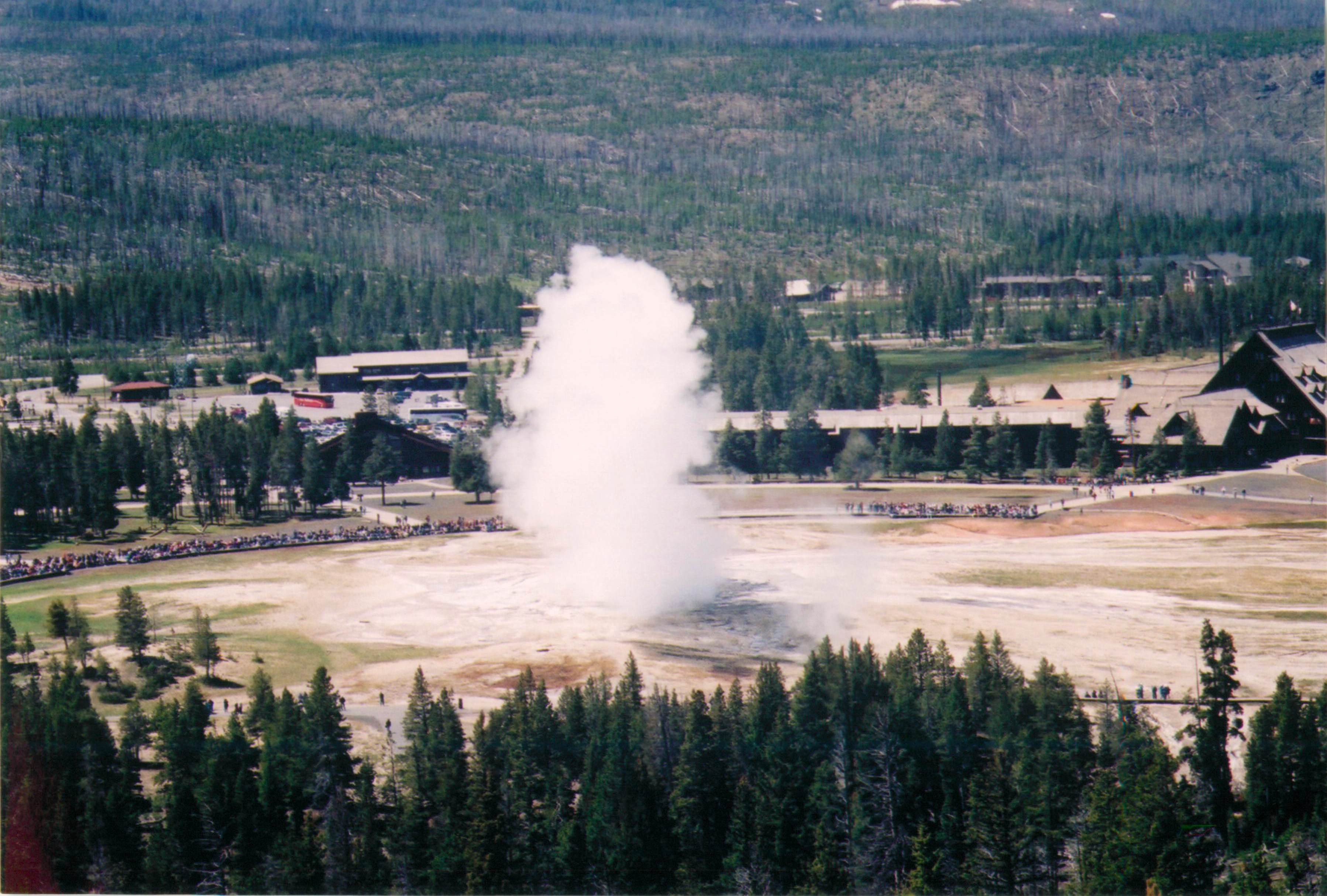 The hot springs…
The hot springs…
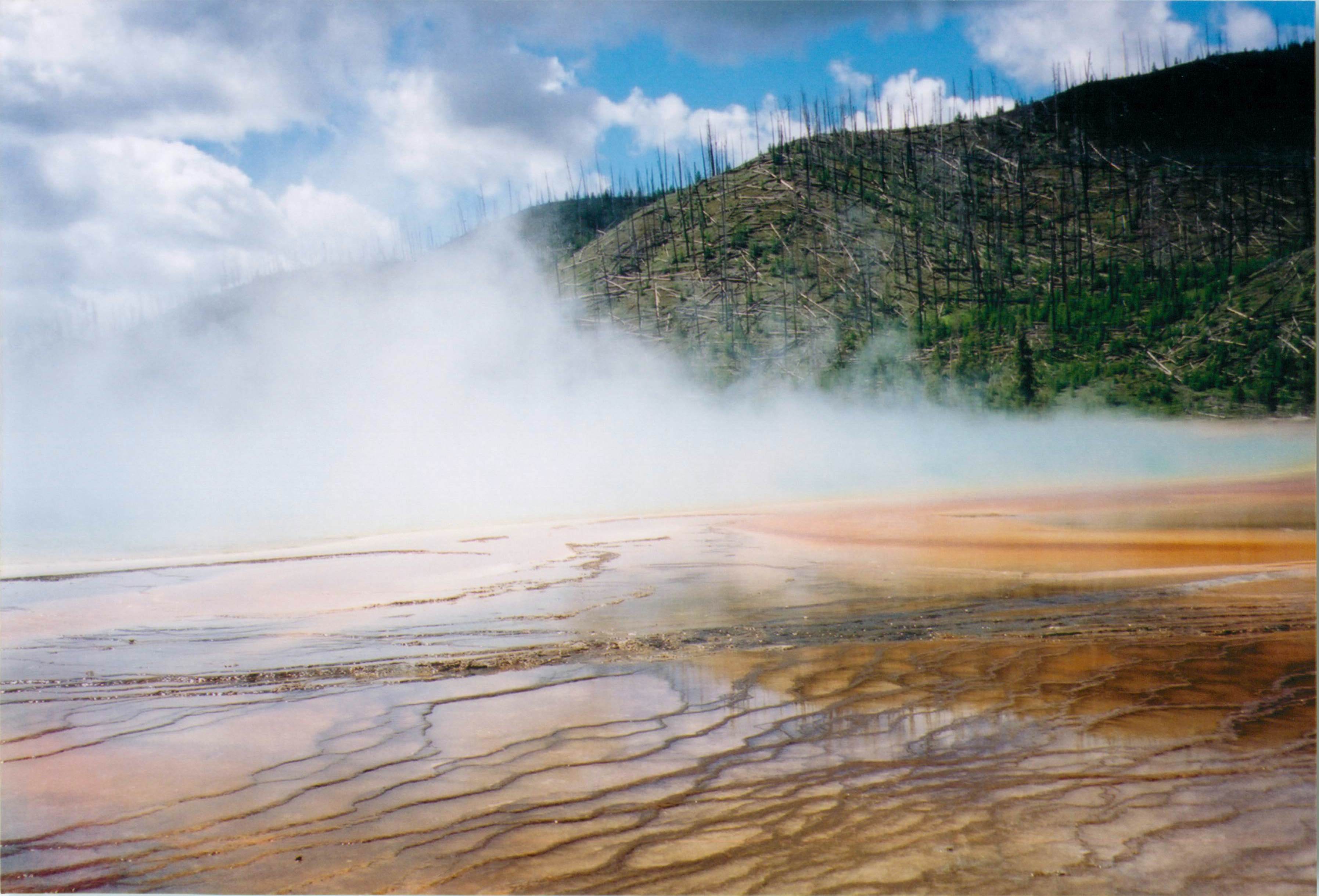 The wildlife…
The wildlife…
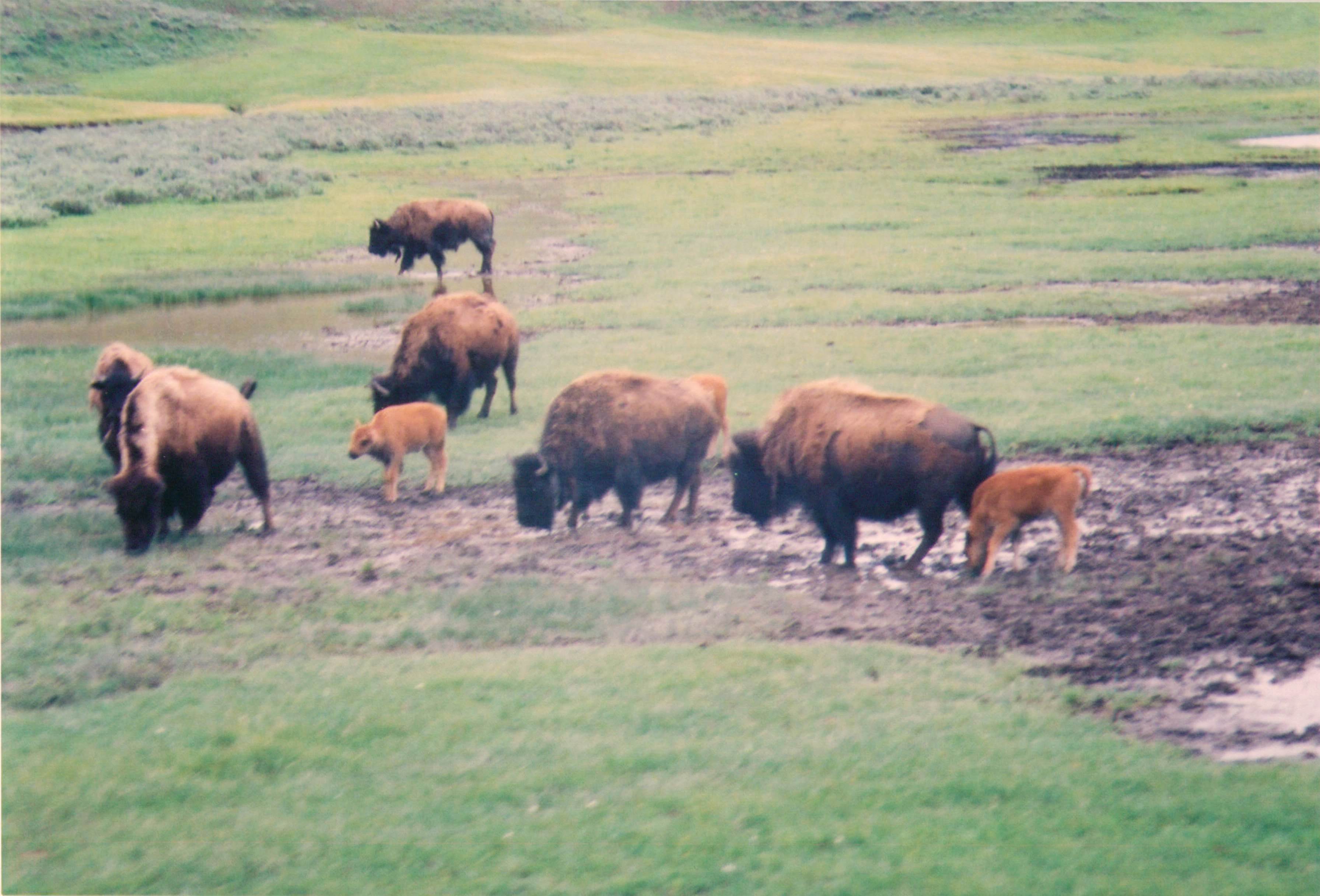
Each morning we would drive from the gorgeous Lake Yellowstone Hotel to a different area of the park. I started to notice some of the stark trees around the landscape…
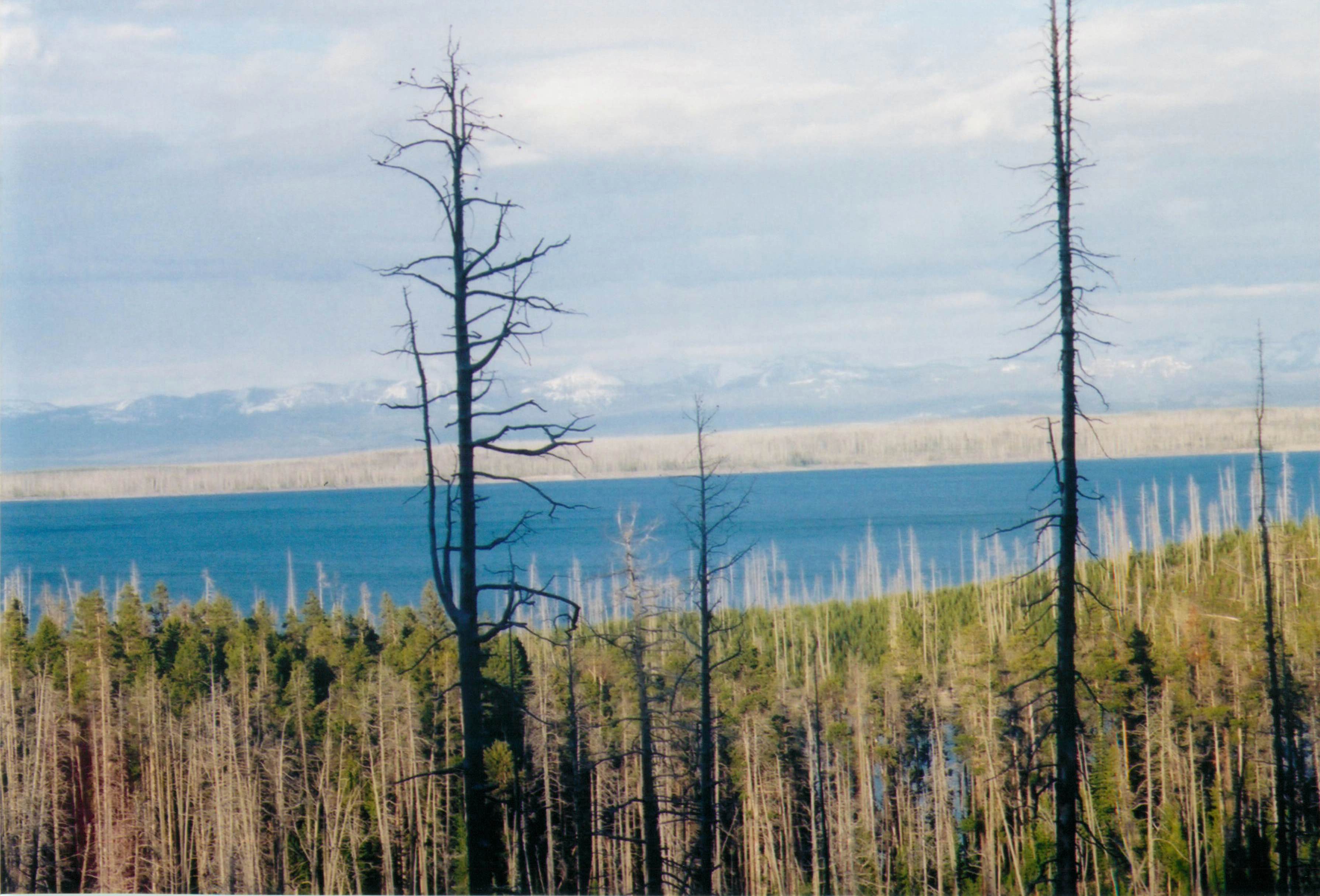 Yellowstone showed the scars of fire. My heart broke to see the scars of such pain amid such beauty.
Yellowstone showed the scars of fire. My heart broke to see the scars of such pain amid such beauty.
 I remembered the intense “Summer of Fire” in 1988. I couldn’t believe we were still seeing the effects in 2004. My rocket scientist husband, who has a bit of the encyclopedic knowledge going on, explained that fires were an ongoing reality in Yellowstone, most of them sparked by lightning strikes. Like most people, I assumed that fires were bad. I got all Smokey the Bear: “Can’t they do anything to prevent forest fires? Or stop them?” As I shot off endless questions, Peter (who avidly avoids the phrase “I don’t know,”) suggested we tour the visitor center by Old Faithful, which told the Story of Fire at the National Park.
I remembered the intense “Summer of Fire” in 1988. I couldn’t believe we were still seeing the effects in 2004. My rocket scientist husband, who has a bit of the encyclopedic knowledge going on, explained that fires were an ongoing reality in Yellowstone, most of them sparked by lightning strikes. Like most people, I assumed that fires were bad. I got all Smokey the Bear: “Can’t they do anything to prevent forest fires? Or stop them?” As I shot off endless questions, Peter (who avidly avoids the phrase “I don’t know,”) suggested we tour the visitor center by Old Faithful, which told the Story of Fire at the National Park.
Conventional wisdom—and the average park visitor like myself—views fires as devastating, destroying everything in its path. We see fire suppression, on the other hand, as good stewardship.
Turns out that the amazing scenery in Yellowstone has been shaped by fire; it is part of the ecosystem. The National Parks Service explains this ecological phenomenon in the educational resources on Yellowstone’s webpage (which, by the way, is where all Yellowstone fire-related facts and figures in this reflection come from):
- Natural (lightning caused) “fires are the primary agent of change in many ecosystems”
- “Many of Yellowstone’s plant species are fire-adapted.”
- Some 80% of the park’s forest has pinecones that actually rely on the intense heat of fire to crack open the resin and release the seeds inside.
- Fires actually stimulate the rebirth and growth of some plants.
- While above ground grasses are consumed by the fires, the below-ground root systems typically remain unharmed, and even increase in productivity after a few years.
In the gift shop section of the visitor center, I picked up the book Fire: A Force of Nature: The Story Behind the Scenery, and was struck by a quote on the front page:
“Fire presents opportunities for new life that don’t exist until a burn.”
Isn’t that the truth.
Certainly my own greatest moments of personal growth have occurred in the aftermath of a painful crisis. The growth might range from learning a difficult lesson to forging a new, better, stronger path. Sometimes it prompts me to develop compassion, broaden my perspective, and practice empathy. Other times the crisis has me questioning decisions, priorities, and/or relationships.
I marvel at the idea that whatever part of me which was struck down by personal pain and suffering has somehow been rebuilt. This dynamic is at the heart of the Christian message: from death comes new life. Theologians use the phrase Paschal Mystery to refer to the suffering, death, and Resurrection of Christ. But the Paschal Mystery doesn’t just refer to what happened to Jesus. It points to the process of dying and rising that we experience in our everyday life.
And by referring to it as a “mystery” we reaffirm the fact that we don’t always understand how that new life occurs… yet we have faith that it will.
“Fire presents opportunities for new life that don’t exist until a burn.”
From death comes new life.
As marvelous as it is, it’s also important to see the word “new” in each of those phrases. New life. Different. Things will never be quite the same as they once were.
Anyone who has experienced personal pain and suffering resulting from the loss of a loved one can attest to that truth: Things will never be quite the same as they once were.
Moreover, let’s be honest: pain is real. Fire burns. No one is expected to cheer on suffering wearing a t-shirt that says, “Yay – growth!” That’s not what faith in the Resurrection is about.
I cringe when I hear phrases like:
What doesn’t kill us makes us stronger.
God doesn’t give us anything we can’t handle.
Everything happens for a reason.
I know they certainly don’t bring me solace. I can’t imagine a Holocaust survivor or rape victim finding comfort in hearing any of these clichés, either.
The enormity of the Yellowstone “Summer of Fire” in 1988 was unprecedented. That summer was the driest in the park’s recorded history. The practice of allowing for “controlled burns” was called into question as the fires burned from June through September, threatening lives and homes in the greater Yellowstone region.
With controlled burns, a fire ignites naturally – with a lightning strike, firefighters monitor as Mother Nature does some “spring cleaning” through the burn, and the fire extinguishes naturally.
The fires that summer were just too big and too out of control.
Between the evil of arson, the enormity of the problem, and the imminent danger to others, Yellowstone National Park needed help.
There was a lot of damage.
Yellowstone was certainly affected by the fires, but all was not lost; it was not devastated; it was not destroyed.
Contrary to what was feared, the fires of 1988 did not deter visitors. In 1989, more than 2,600,000 people came to Yellowstone—the highest annual visitation of the 1980s.
While we are in the midst of the flames of suffering, it is difficult. Even Jesus wept. But that is not the end of the story. From death comes new life. We are people of the Resurrection. Faith in new life is what it means to be a people of hope.
As a people of hope, withstand the fire. Understand that controlled burns are a part of life. Ask for help. And when rising from the ashes, be sure to identify and appreciate “spectacular displays of wildflowers” whenever you see them.
“Grand Prismatic Spring Yellowstones © Depositphotos.com/kwiktor”

